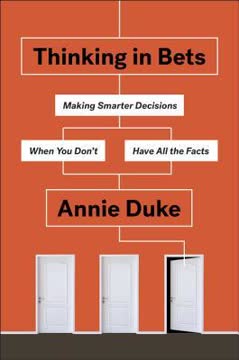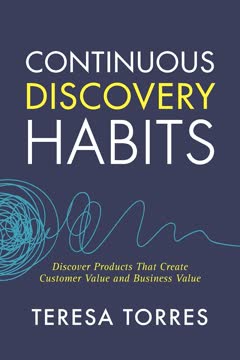重点摘要
1. 游戏化:利用游戏机制吸引用户
通过游戏思维和游戏机制来吸引用户并解决问题。
定义游戏化。 游戏化是将游戏设计元素和原则应用于非游戏情境。它利用我们对游戏的天生热爱,使平凡的任务变得更有趣和更具激励性。通过引入积分、徽章、排行榜和挑战等元素,游戏化可以在教育、健身、生产力和客户忠诚度计划等各个领域改变用户体验。
主要好处:
- 增加用户参与度和留存率
- 提高动机和行为改变
- 改善学习和技能发展
- 增强客户忠诚度和品牌亲和力
- 基于数据的用户行为洞察
游戏化利用了人类对成就、地位和社交连接的基本渴望。当有效实施时,它可以创造一个良性循环,使用户不断受到激励参与、改进并与他人分享他们的体验。
2. 理解玩家动机:有效游戏化的关键
无论实物奖品是什么,你都需要披露其价值(或确保其价值对你最忠实的客户是显而易见的)。因此,玩家往往会准确评估互动的价值。
玩家类型。 理解不同玩家的动机对于设计有效的游戏化系统至关重要。Richard Bartle的玩家类型学识别了四种主要类型:成就者(以成就为驱动力)、探索者(以发现为动机)、社交者(寻求互动)和杀手(竞争和支配)。虽然个体可能表现出多种类型的特征,但识别这些核心动机有助于根据不同用户偏好定制体验。
内在动机与外在动机:
- 内在动机:内部驱动力(如享受、个人成长)
- 外在动机:外部奖励(如积分、徽章、奖品)
平衡内在和外在动机是关键。虽然外部奖励可以启动参与,但培养内在动机会带来更可持续的长期参与。设计者应努力创建与用户内部驱动力一致的系统,同时提供有意义的外部认可和奖励。
3. 核心游戏机制:积分、等级、排行榜和徽章
无论积分的累积是否在玩家之间共享,甚至在设计者和玩家之间共享,积分都是重要的。
游戏化的构建模块。 这些基本元素构成了大多数游戏化系统的骨干:
- 积分:量化进度并提供即时反馈
- 等级:结构化进展并创造成就感
- 排行榜:促进竞争和社交比较
- 徽章:认可特定成就和里程碑
每种机制都有其独特的心理目的。积分提供持续的反馈和进度感。等级提供明确的目标和通向掌握的结构化路径。排行榜利用我们的竞争天性和对社交地位的渴望。徽章满足我们收集和展示成就的欲望。
设计这些元素时,请考虑:
- 透明度:确保用户了解如何获得积分和进展
- 平衡:创建可实现的目标,同时提供挑战感
- 意义:将奖励与真正有益于用户或系统的行为联系起来
- 多样性:提供多种方式来获得认可和进展
4. 入门和社交参与:打造引人入胜的用户旅程
新手不应被赋予大师级别的挑战。不同级别的不同挑战是合适的,并且从根本上更成功。
第一印象很重要。 精心设计的入门过程对于用户留存和长期参与至关重要。关键原则包括:
- 渐进复杂性:逐步引入功能和机制
- 早期胜利:提供快速、可实现的成功以建立信心
- 明确指导:提供直观的教程和上下文帮助
- 个性化:根据用户偏好或目标定制体验
社交参与循环创造参与的良性循环:
- 激励情感(如连接的渴望)
- 社交行动号召(如邀请朋友)
- 玩家重新参与(如通知)
- 可见的进展/奖励(如解锁新功能)
通过利用社交动态,游戏化系统可以利用我们对社区内连接和地位的天生渴望。这不仅增加了参与度,还通过用户驱动的病毒循环促进了有机增长。
5. 定制和奖励:个性化游戏化体验
虽然我们可以相对容易地在你的产品或服务上撒上游戏化的“糖霜”,但如果底层的“蛋糕”不够美味,大多数用户不会想再吃第二口。
个性化的力量。 允许用户定制他们的体验可以增加投入和所有权。这可以包括:
- 创建和定制头像
- 选择个人目标或挑战
- 选择偏好的奖励类型
- 定制界面元素或主题
然而,要警惕“选择的暴政”。过多的选项会让用户不知所措。提供有意义的定制而不会导致决策瘫痪。
奖励策略:
- 虚拟物品:具有感知价值的数字物品(如头像配件)
- 访问权限:独家内容或功能
- 权力:在系统内增加能力或影响力
- 现实世界的好处:与应用内成就相关的实际利益
有效的奖励系统平衡即时满足和长期目标。使用可预测和惊喜奖励的混合来保持兴趣。始终确保奖励在你的应用程序上下文中有意义,并与用户动机一致。
6. 平衡挑战与成就:关卡设计的艺术
在游戏设计中,关卡难度不是线性的。换句话说,达到一级需要100分,二级需要200分,三级需要300分,依此类推。相反,难度是以曲线形式增加的。
渐进挑战。 精心设计的关卡系统在保持最佳挑战水平的同时提供连续的进展感。关键考虑因素:
- 学习曲线:从简单开始,逐渐增加复杂性
- 基于技能的进展:将挑战与用户能力匹配
- 有意义的里程碑:在定期间隔创建明确、可实现的目标
- 可变难度:包括“轻松胜利”和挑战目标
心流状态。 旨在让用户保持在“心流”的心理状态,即挑战和技能平衡:
- 太容易 → 无聊
- 太难 → 焦虑
- 刚好 → 心流(投入、专注、愉快)
定期分析用户数据以微调难度曲线,确保大多数玩家能够稳步进展,而不会因遇到令人沮丧的障碍或因缺乏挑战而失去兴趣。
7. 分析与迭代:持续改进游戏化系统
敏捷设计在发布前寻找最小可行产品——设计者和目标消费者现在需要的东西——知道他们以后可以更改它。
数据驱动设计。 实施强大的分析对于理解用户行为和优化你的游戏化系统至关重要。关键指标包括:
- 参与度:每日/月活跃用户、会话时长、留存率
- 进展:关卡分布、挑战/任务完成率
- 社交:邀请率、病毒系数、社交分享频率
- 货币化:转化率、每用户平均收入(如适用)
迭代改进:
- 使用核心功能发布(最小可行产品)
- 收集用户行为和痛点数据
- 分析趋势并识别改进领域
- 实施更改和新功能
- 持续重复这一过程
准备根据实际使用情况调整你的系统。理论上听起来不错的东西可能不会引起实际用户的共鸣。拥抱敏捷思维,持续收集反馈并根据数据进行改进,以优化你的游戏化体验。
8. 现实应用:成功游戏化的案例研究
Nike Plus巧妙地将玩家吸引到游戏中,并使她想一次又一次地回来,从而推进她成为更好跑者的目标。
从成功中学习。 研究现实中的例子可以为有效的游戏化策略提供宝贵的见解:
-
Nike+:游戏化的健身追踪
-
社交挑战和名人鼓励
-
可视化进度映射和成就庆祝
-
与现实目标(如马拉松训练)整合
-
Duolingo:语言学习应用
-
技能树结构化进展
-
每日连胜和限时挑战
-
即时反馈和小型课程
-
Stack Overflow:开发者问答平台
-
通过质量贡献获得声誉积分和徽章
-
声誉等级相关的特权
-
游戏化的审核和社区管理
成功实施的关键要点:
- 将游戏机制与核心用户动机和产品目标对齐
- 创建有意义的进展系统,保持用户长期参与
- 利用社交动态增加留存率和病毒增长
- 使用游戏化来强化期望的行为和技能发展
- 根据用户反馈和数据分析不断迭代
通过研究这些例子并将其策略适应于你的具体情境,你可以为用户创建更具吸引力和更有效的游戏化体验。
最后更新日期:
FAQ
What's "Gamification by Design" about?
- Overview: "Gamification by Design" by Gabe Zichermann explores how game mechanics can be implemented in web and mobile applications to enhance user engagement and solve business problems.
- Core Concept: The book introduces the concept of gamification, which involves using game-thinking and game mechanics to engage users and solve problems.
- Practical Guide: It serves as a practical guide for marketers, product designers, and strategists to understand and apply gamification in their projects.
- Case Studies and Examples: The book includes case studies and examples to illustrate successful gamification strategies in various industries.
Why should I read "Gamification by Design"?
- Understanding Gamification: It provides a comprehensive understanding of gamification and its potential to transform user engagement and business strategies.
- Practical Application: The book offers practical advice and techniques for implementing gamification in real-world scenarios.
- Expert Insights: Written by a leading expert in the field, it includes insights and lessons from successful gamification projects.
- Broad Audience: It is suitable for marketers, product designers, developers, and anyone interested in leveraging game mechanics for business success.
What are the key takeaways of "Gamification by Design"?
- Game Mechanics: Understanding and applying game mechanics like points, badges, levels, and leaderboards can significantly enhance user engagement.
- Player Motivation: Identifying and leveraging player motivations, such as mastery, social interaction, and achievement, is crucial for successful gamification.
- Design Principles: The book emphasizes the importance of designing for engagement, using frameworks like MDA (Mechanics, Dynamics, Aesthetics).
- Case Studies: Real-world examples demonstrate how gamification can be effectively implemented across different industries and applications.
How does "Gamification by Design" define gamification?
- Definition: Gamification is defined as the process of using game-thinking and game mechanics to engage users and solve problems.
- Flexible Framework: This framework is powerful and flexible, applicable to any problem that can be addressed by influencing human motivation and behavior.
- Broader Context: It unites concepts like serious games, advergaming, and games-for-change into a cohesive worldview informed by behavioral psychology.
- Practical Application: The book provides a practical approach to applying this definition in business and product design.
What are the foundational concepts in "Gamification by Design"?
- Fun Quotient: The book emphasizes that everything has the potential to be fun, and fun should be a primary goal in design.
- Player Motivation: Understanding powerful human motivators, such as mastery and social interaction, is key to designing engaging experiences.
- Game Mechanics: Core mechanics like points, badges, levels, and leaderboards are essential tools for creating engaging systems.
- SAPS Model: The SAPS (Status, Access, Power, Stuff) model is introduced as a system of rewards, with status being the most desired.
How does "Gamification by Design" address player motivation?
- Intrinsic vs. Extrinsic: The book discusses the balance between intrinsic and extrinsic motivation, emphasizing the importance of aligning them.
- Player Types: It categorizes players into types like achievers, socializers, explorers, and killers, each with different motivations.
- Progression to Mastery: The book outlines a progression from novice to visionary, highlighting the importance of designing for different mastery levels.
- Motivational Techniques: Techniques like feedback, reinforcement, and social engagement loops are explored to enhance motivation.
What are the key game mechanics discussed in "Gamification by Design"?
- Points and Levels: Points are used to track and reward player actions, while levels indicate progress and status.
- Badges and Leaderboards: Badges serve as visual rewards for achievements, and leaderboards provide social comparison and competition.
- Challenges and Quests: These provide direction and goals for players, enhancing engagement and motivation.
- Customization and Feedback: Customization allows players to personalize their experience, and feedback provides real-time progress updates.
How does "Gamification by Design" suggest implementing gamification?
- MDA Framework: The book recommends using the MDA (Mechanics, Dynamics, Aesthetics) framework to design engaging experiences.
- Onboarding: It emphasizes the importance of a smooth onboarding process to introduce players to the system and encourage initial engagement.
- Iterative Design: The book advocates for an agile, iterative approach to design, allowing for continuous improvement and tuning.
- Case Studies: Real-world examples, like Nike Plus and Foursquare, illustrate successful implementation strategies.
What are some case studies highlighted in "Gamification by Design"?
- Nike Plus: This case study shows how gamification can make fitness fun by using social support, feedback, and challenges to motivate runners.
- Foursquare: The book discusses how Foursquare successfully used badges and leaderboards to solve the "empty bar problem" and engage users.
- Health Month: This example demonstrates how gamification can motivate people to improve their health through a structured, social game.
- Quora vs. Yahoo! Answers: The book compares these platforms to highlight different approaches to gamifying questions and answers.
What are the potential pitfalls of gamification according to "Gamification by Design"?
- Overjustification: Replacing intrinsic motivation with extrinsic rewards can sometimes undermine long-term engagement.
- Badgenfreude: An overabundance of meaningless badges can lead to disengagement and devalue the reward system.
- Gaming the System: Players may attempt to exploit the system, so it's important to design with safeguards and iterate based on player behavior.
- Misalignment: Poorly aligned game mechanics and player motivations can result in ineffective or counterproductive outcomes.
How does "Gamification by Design" address the legal and ethical considerations of gamification?
- Legal Issues: The book highlights the importance of understanding legal and regulatory issues, especially concerning virtual currencies and rewards.
- Terms of Service: It advises creating clear terms of service and applying them consistently to protect the integrity of the system.
- Policing the System: The book suggests employing admin or sysop positions to monitor and control player behavior and transactions.
- Ethical Design: Designers are encouraged to consider the ethical implications of their gamification strategies and prioritize player well-being.
What are the best quotes from "Gamification by Design" and what do they mean?
- "Fun Is Job #1": This quote emphasizes the importance of making experiences enjoyable, as fun is a key driver of engagement and motivation.
- "The House Always Wins": This highlights the need for well-designed systems where the designer maintains control and ensures the system's success.
- "Be the Sherpa": This metaphor encourages designers to guide players on their journey to mastery, providing support and structure along the way.
- "Gamification is about to change everything": This statement reflects the transformative potential of gamification in various industries and applications.
评论
《Gamification by Design》的评价褒贬不一。读者们欣赏其实用的方法和对游戏化概念的介绍,但许多人认为它内容过时且深度不足。一些人称赞书中的实例和清单,而另一些人则批评其商业化倾向和对游戏机制的浅薄处理。总体来看,这本书被认为是初学者的良好起点,但有经验的读者发现其中的新信息很少。几位评论者指出,这本书的自我宣传性质和过时的参考资料是其缺点。总体而言,它被认为是对游戏化技术的基本概述,长期价值有限。
Similar Books













